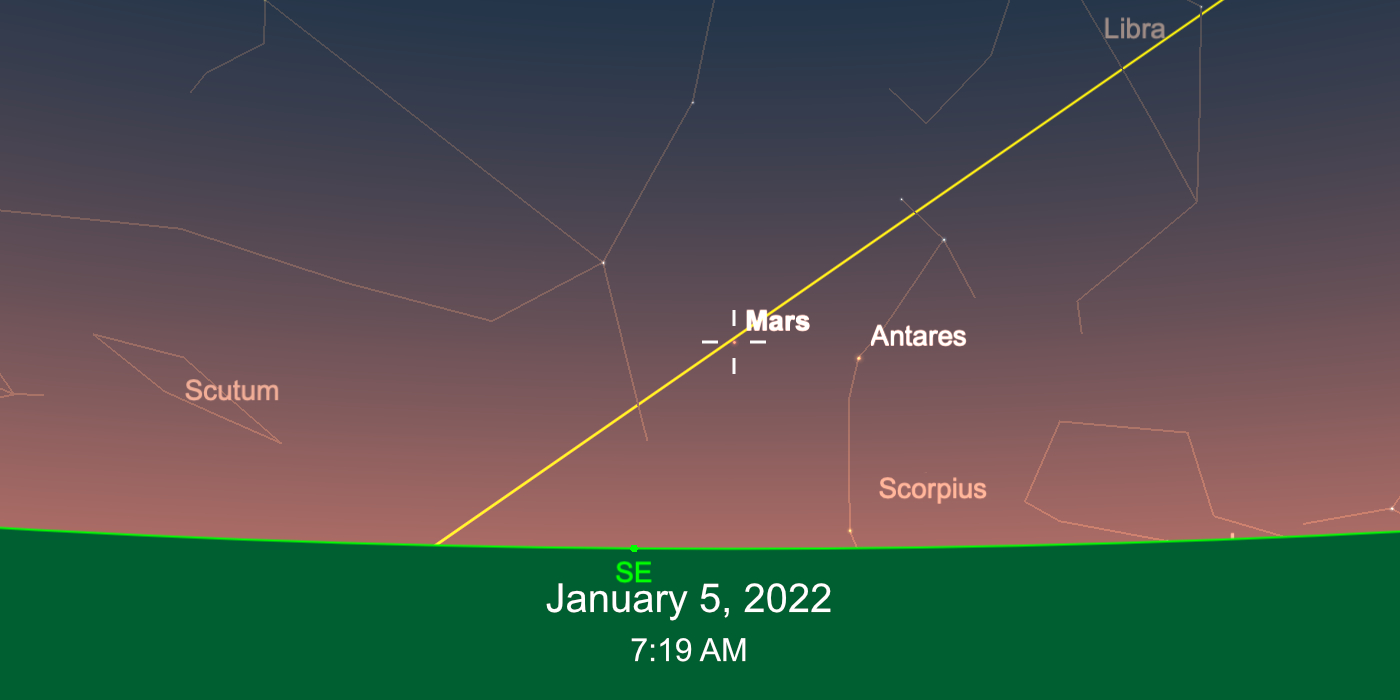 Mars meets Not-Mars in AM Mars meets Not-Mars in AM |
 |
In Roman mythology, Mars was the god of war. This name was given to the planet due to its bright red color, often associated with war.
As a planet, Mars appears to travel a path in the sky known as the ecliptic (yellow line above). Taking 26 months to complete its journey, is passes through the constellations of the zodiac -- or circle of animals -- and appears to pass close to many stars.
One of the stars that Mars passes is also a bright red color. It is the star Antares, a red supergiant about 550 light years from us. Some day it may explode in a gigantic explosion known as a supernova and will likely be visible in our daytime sky.
Mars and Antares, both being bright red, are easily confused. It appears that our ancestors got them confused judging by the meaning of the name 'Antares' -- in Greek, it simply means 'not Mars'.
In early January, Mars and 'Not-Mars' will be next to each other, giving us a chance to compare them. Will you be able to tell which is which? It is said that stars twinkle and planets don't -- here's your chance to see for yourself. However, you'll need to time this just right since Mars will be low in the sky and will be rising shortly before sunrise. A binocular can help. You'll also need a good view of the SE horizon.
Mars info
|
|



